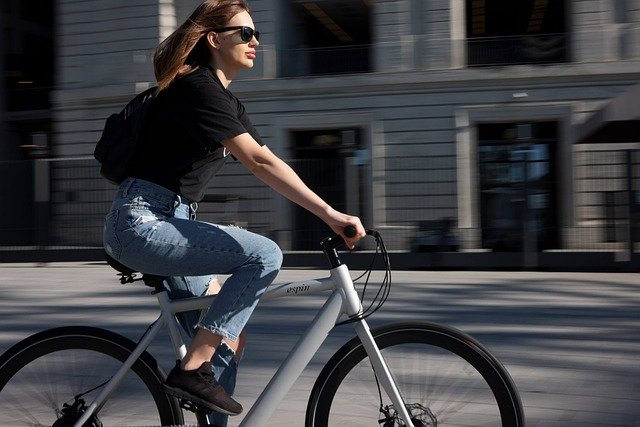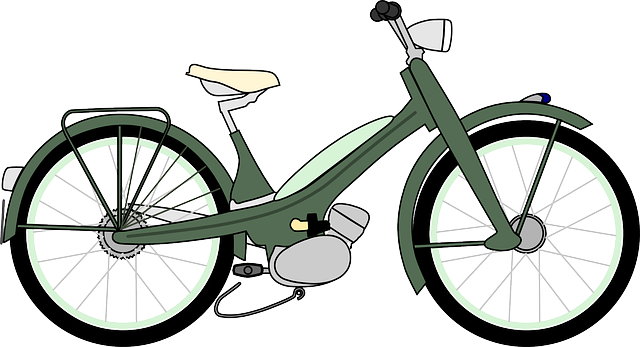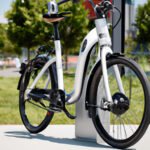
Are you looking to get the most out of your e-bike’s motor? Want to make sure you’re maximizing its efficiency and getting the best performance possible? In this article, we’ll explore some tips and tricks to help you do just that. From proper maintenance to optimizing your riding habits, we’ll cover everything you need to know to ensure your e-bike’s motor is working at its best. So, if you’re ready to take your e-bike riding to the next level, keep reading to learn more! When you invest in an e-bike, you want to make sure you’re getting the most out of its motor. After all, the motor is what powers your bike and provides that extra boost when you need it. Thankfully, there are several steps you can take to maximize the efficiency of your e-bike’s motor, ensuring you get the longest possible range and a smooth, enjoyable ride. In this article, we’ll explore some tips and tricks to help you optimize your e-bike’s motor performance.
Understanding the Basics of E-bike Motors
Before we dive into the specifics of maximizing motor efficiency, it’s important to have a basic understanding of how e-bike motors work. There are several different types of e-bike motors available, each with its own advantages and drawbacks.
Different Types of E-bike Motors
The most common types of e-bike motors are hub motors and mid-drive motors. Hub motors are located in the wheel hub and provide direct power to the wheel, while mid-drive motors are located near the bike’s bottom bracket and transfer power to the pedals, giving a more natural feel of riding. Each type of motor has its own unique characteristics and performance capabilities, so it’s important to choose one that suits your riding style and needs.
How E-bike Motors Work
E-bike motors work by converting electrical energy from the battery into mechanical energy to power the bike. This is achieved through a combination of gears, sensors, and a control unit. When you pedal or engage the motor, the sensors detect your input and send a signal to the control unit, which then determines how much assistance the motor should provide. The motor then kicks in, providing additional power to aid your pedaling or propel the bike forward.
Factors Affecting Motor Efficiency
There are several factors that can impact the efficiency of your e-bike’s motor. These include:
- Temperature: Motors can become less efficient when they get too hot, so it’s important to ensure proper cooling and avoid overheating.
- Weight: The weight of the bike and rider can affect motor efficiency. By reducing the overall weight of the bike, you can help the motor perform more efficiently.
- Riding style: Aggressive acceleration and frequent use of the motor’s highest power settings can decrease efficiency. By adopting a more conservative riding style, you can maximize motor efficiency.
- Terrain: Riding on hilly terrain can put more strain on the motor, reducing its efficiency. Choosing routes with less elevation can help maximize motor performance.
Now that we have a solid understanding of e-bike motors, let’s explore some practical steps you can take to maximize their efficiency.
Regular Maintenance for Optimal Performance
To keep your e-bike’s motor running smoothly and efficiently, regular maintenance is essential. Here are some key areas to focus on:
Keeping the Motor Clean
Dirt and debris can build up on the motor over time, affecting its performance. Regularly clean the motor using a gentle brush or cloth to remove any accumulated dirt. Be careful not to use excessive water or harsh chemicals, as these can damage the motor.
Regularly Checking and Lubricating Moving Parts
As with any mechanical system, e-bike motors have moving parts that require proper lubrication. Check the chain, gears, and other moving parts regularly, and apply lubricant as needed to prevent friction and ensure smooth operation.
Maintaining Proper Tire Pressure
Optimal tire pressure is crucial for efficient motor performance. Check your tire pressure regularly and make sure it’s within the recommended range. Underinflated tires can increase rolling resistance, putting more strain on the motor and decreasing efficiency.

Optimizing Battery Usage for Improved Efficiency
The e-bike’s battery is a critical component that directly impacts motor performance and efficiency. Here are some tips for maximizing battery usage:
Choosing the Right Battery
When purchasing an e-bike, choose a battery with the appropriate capacity for your needs. Higher capacity batteries generally offer longer range, but they can also be heavier and more expensive. Consider your typical riding distance and terrain to determine the ideal battery capacity for you.
Charging and Discharging Guidelines
To extend the lifespan of your e-bike’s battery and maintain its efficiency, follow the manufacturer’s guidelines for charging and discharging. Avoid overcharging or completely discharging the battery, as these can lead to reduced performance and shorter battery life.
Avoiding Overheating
High temperatures can negatively affect battery performance and efficiency. Avoid leaving your e-bike in direct sunlight for prolonged periods, especially when charging. If possible, store the battery in a cool, well-ventilated area to prevent overheating.
Efficiency-Boosting Riding Techniques
In addition to proper maintenance and battery management, your riding techniques can also impact the efficiency of your e-bike’s motor. Here are some tips to help you ride more efficiently:
Maintaining a Steady Speed
Sudden speed changes and rapid acceleration can decrease motor efficiency. Instead, try to maintain a steady speed and avoid unnecessary bursts of speed. Gradual acceleration and deceleration can help optimize motor performance.
Utilizing Pedal Assist Mode Wisely
E-bikes often come with different levels of pedal assist, allowing you to choose the amount of assistance the motor provides. In most cases, lower levels of assist offer greater efficiency. Experiment with different levels to find the sweet spot that balances assistance and efficiency for your riding style.
Applying Smooth and Gradual Acceleration
When accelerating from a stop or climbing hills, apply smooth and gradual pressure to the pedals. This helps distribute the workload more evenly between your legs and the motor, maximizing efficiency. Avoid putting excessive strain on the motor by mashing down on the pedals with full force.

Proper Gear Shifting for Better Performance
An often-overlooked aspect of maximizing motor efficiency is proper gear shifting. Here’s how you can optimize your e-bike’s gearing system:
Understanding E-bike Gearing
E-bikes typically have multiple gears, similar to traditional bicycles. Understanding how to use these gears effectively is crucial for efficient motor performance. Higher gears are best for flat terrain and high speeds, while lower gears are ideal for climbing steep hills or starting from a standstill.
Efficient Shifting Techniques
When shifting gears, aim to do so smoothly and without interrupting your pedaling cadence. Anticipate upcoming inclines or changes in terrain and shift preemptively to maintain a consistent pedaling effort. Avoid cross-chaining, which is when the chain is on the smallest front and rear sprockets or the largest front and rear sprockets. This can cause excessive wear on the chain and reduce efficiency.
Avoiding Gear Cross-Chaining
Cross-chaining occurs when the chain is on the opposite extremes of the front and rear gears. This puts unnecessary strain on the drivetrain and can decrease efficiency. To avoid cross-chaining, try to keep your chain on a straight line between the front and rear gears.
Optimizing Motor Settings and Features
Most e-bikes offer customizable motor settings and features that can help maximize efficiency. Here are a few options to consider:
Customizing Power Levels
Depending on your e-bike model, you may be able to adjust the power levels of the motor. Lowering the power level can help conserve battery life and increase efficiency. Experiment with different settings to find the balance that works best for you.
Adjusting Motor Assistance Sensitivity
Some e-bikes allow you to adjust the motor’s sensitivity to your pedaling input. Higher sensitivity may provide a more immediate and powerful response, but it can also reduce efficiency. Consider lowering the sensitivity to maximize motor efficiency, especially when riding on flat terrain or with minimal assistance needed.
Utilizing Energy Recovery Systems
Certain e-bike models feature energy recovery systems, which capture and store energy generated during braking or descending hills. This energy can then be used to assist the motor during acceleration or uphill climbs. If your e-bike has this feature, be sure to take advantage of it to maximize overall efficiency.

Upgrading Components for Enhanced Efficiency
If you’re looking to further improve the efficiency of your e-bike’s motor, consider upgrading certain components. Here are a few upgrades to consider:
Upgrading to Efficient Motor Controllers
Motor controllers play a crucial role in how efficiently the motor operates. Upgrading to a more advanced and efficient motor controller can help optimize motor performance and responsiveness.
Enhancing Cooling Systems
Heat can negatively impact motor efficiency, so improving the cooling system can make a significant difference. Consider adding additional cooling features, such as heat sinks or fans, to help dissipate heat more effectively and prevent overheating.
Installing Aerodynamic Accessories
Reducing wind resistance can help your e-bike glide through the air more efficiently. Consider adding aerodynamic accessories, such as handlebar fairings or streamlined panniers, to minimize drag and increase overall efficiency.
Monitoring and Analyzing Performance Data
To truly maximize the efficiency of your e-bike’s motor, it’s important to monitor and analyze performance data. Here are some tools and techniques to help you do so:
Using E-bike Computer Systems
Many e-bikes come equipped with computer systems that provide valuable data, such as speed, distance, battery level, and power output. Use these systems to track your performance and make adjustments as needed.
Tracking Energy Consumption
Monitoring your e-bike’s energy consumption can help you identify areas where efficiency can be improved. Keep track of how much energy you’re using during different rides and analyze the data to find patterns and areas for optimization.
Analyzing Performance Metrics
By analyzing performance metrics, such as average speed, power output, and cadence, you can gain valuable insights into how efficiently you’re utilizing the motor. Experiment with different techniques and monitor the resulting metrics to fine-tune your riding style for maximum efficiency.

Improving Overall Bike Efficiency
Lastly, there are a few additional steps you can take to improve the overall efficiency of your e-bike:
Reducing Bike Weight
A lighter bike requires less power from the motor, increasing overall efficiency. Consider removing unnecessary accessories or opting for lighter components to reduce the overall weight of your e-bike.
Ensuring Proper Bike Fit
An ill-fitting bike can lead to inefficient pedaling and put unnecessary strain on the motor. Make sure your e-bike is properly sized and adjusted to your body, enabling you to pedal with ease and efficiency.
Optimizing Aerodynamics
Minimizing wind resistance can have a significant impact on overall efficiency. Adjust your riding position to be more aerodynamic and consider adding accessories, such as aero handlebars or a streamlined helmet, to further reduce drag.
In conclusion, maximizing the efficiency of your e-bike’s motor involves a combination of proper maintenance, battery management, riding techniques, gear shifting, motor settings, component upgrades, and data analysis. By following these tips and putting in a little effort, you can enhance the performance and range of your e-bike, ensuring a more enjoyable and efficient riding experience. So get out there, make the most of your e-bike, and enjoy the ride!




















